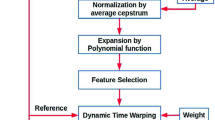In spite of recent advances in automatic speech recognition, the performance of state-of-the-art speech recognisers fluctuates depending on the speaker. Speaker normalisation aims at the reduction of differences between the acoustic space of a new speaker and the training acoustic space of a given speech recogniser, improving performance. Normalisation is based on an acoustic feature transformation, to be estimated from a small amount of speech signal. This paper introduces a mixture of recurrent neural networks as an effective regression technique to approach the problem. A suitable Vit-erbi-based time alignment procedure is proposed for generating the adaptation set. The mixture is compared with linear regression and single-model connectionist approaches. Speaker-dependent and speaker-independent continuous speech recognition experiments with a large vocabulary, using Hidden Markov Models, are presented. Results show that the mixture improves recognition performance, yielding a 21% relative reduction of the word error rate, i.e. comparable with that obtained with model-adaptation approaches.
Similar content being viewed by others
Author information
Authors and Affiliations
Rights and permissions
About this article
Cite this article
Trentin, E., Giuliani, D. A Mixture of Recurrent Neural Networks for Speaker Normalisation. Neural Comput & Applic 10, 120–135 (2001). https://doi.org/10.1007/s005210170004
Issue Date:
DOI: https://doi.org/10.1007/s005210170004




